Design for Portfolio – Create an Impressive Showcase
Last Updated on February 1, 2024 by Richard Martin Linga
In today’s world, having a great design for portfolio is key. It’s your chance to show off your skills and work. So, think of it as a personal showcase. It’s what grabs people’s attention, whether they are potential clients or employers. That’s why your design for portfolio matters so much. The presentation matters as much as the content itself. Firstly, a well-thought-out design for portfolio makes you stand out. Therefore, it’s like your own brand. This is where design for portfolio comes in. It’s about making your work shine. Remember, your portfolio is often the first thing people see. You want it to leave a lasting impression.
So, this article will guide you. It will show you how to design a portfolio that’s both impressive and easy to understand. We will keep it simple. No hard words or tech talk. Just clear, helpful tips. We will help you create a design for portfolio that tells your story in the best way. After all, your portfolio is all about you and your work.
Understanding the Basics of Design for Portfolio
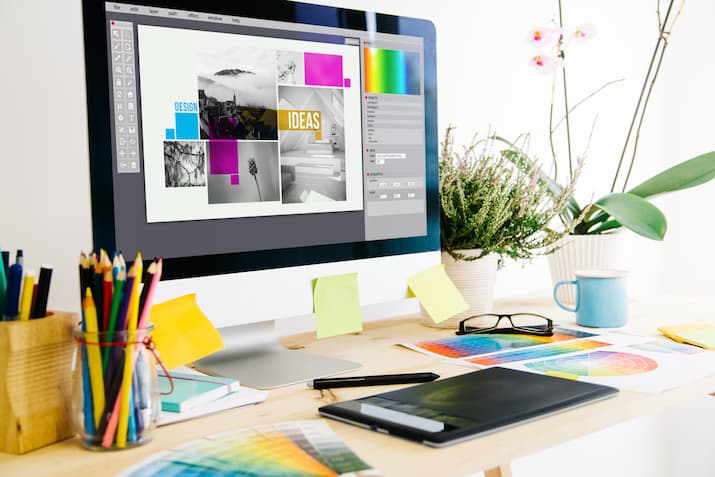
Designing a portfolio is like telling a story. In other words, it’s all about presenting your work in a way that’s clear and engaging. So, let’s break down the basics of design for portfolio. Also, this will help you make a design for portfolio that stands out.
Keep It Simple
Firstly, keep it simple. A clean design lets your work shine. In addition, too much stuff can be distracting. Focus on your best pieces. To clarify, this is what people want to see. After all, a portfolio is a collection of your top work.
Choose the Right Layout
The layout is how you arrange your work. It’s important. You want it to be easy to look at. So, think about how people will view your portfolio. Also, make sure it’s easy to navigate. Keep it user-friendly. Avoid unnecessary complexity in your presentation.
Use Consistent Style
Your style is like your fingerprint. Therefore, it should be consistent across your portfolio. This helps create a unified look. It shows your unique touch. So, choose colors and fonts that represent you. But remember, don’t go overboard. Less is often more.
Highlight Your Best Work
This is key. In other words, choose pieces that show your skills. It’s not just about quantity. Quality matters more. Therefore, pick work that you’re proud of. This shows people what you can do. So, think of it as your greatest hits.
Tell Your Story
Your portfolio is more than just pictures or projects. It’s your story. Share a bit about each piece. Tell people what inspired you. Also, explain the process. This adds a personal touch. It makes your portfolio more than just a display. It’s a glimpse into your world.
Update Regularly
Keep your portfolio fresh. Also, add new work as you go. This shows that you’re active and evolving. It keeps people interested. So remember, your portfolio is a living thing. It grows as you do.
Accessibility is Key
Make sure everyone can view your portfolio. To clarify, it should work on all devices. For instance, this means phones, tablets, and computers. Aim for maximum visibility for your creations. Accessibility is important.
Design for portfolio doesn’t have to be hard. Keep these basics in mind. They will help you design for portfolio that’s both beautiful and effective. Remember, your portfolio is a reflection of you. Make it count.
Choosing the Right Platform for Your Portfolio
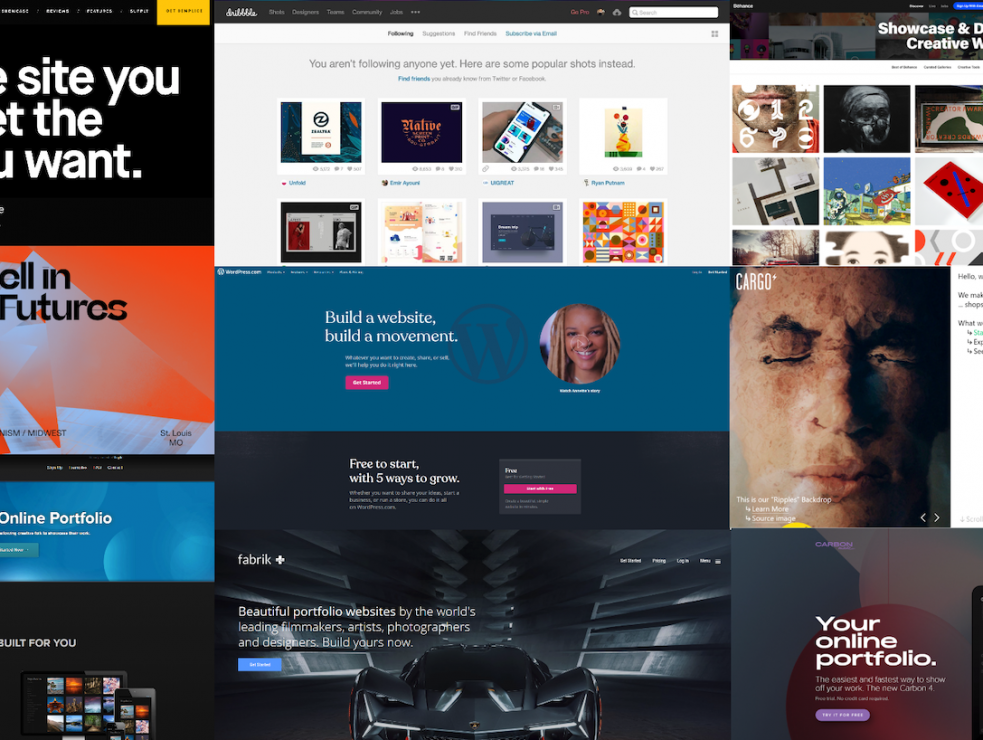
When it comes to design for portfolio, where you host it is key. You have many options. Each has its pros and cons. So, let’s explore the best platforms for your portfolio. This way, you can pick one that suits you best.
Website Builders: Easy and Quick
Website builders are a popular choice. That is to say, they are easy to use. Technical expertise is not a prerequisite. For example, sites like Canva Pro in the Philippines offer tools to create stunning design for portfolio. They have templates and design elements. This is great for a quick and professional look. Especially useful if you’re starting a side hustle in the Philippines.
Custom Websites: Total Control
If you want more control, consider a custom website. That is to say, this is where a WordPress developer can help. They can build a site that’s just right for you. You get a unique design. It’s all yours. But, it can be more work and cost. So, keep this in mind.
Online Design for Portfolio Platforms: Built for Creatives
There are platforms made just for portfolios. They focus on showcasing creative work. That is to say, these are great if you want a community of artists and designers. They can offer more exposure. But, they might have less customization.
Social Media: Wide Reach
Don’t forget about social media. To clarify, it’s a powerful tool. You can share your work with a wide audience. For example, platforms like Instagram are popular among creatives. It’s a means to showcase your work to a broader audience. Just remember, it’s more about sharing than a full portfolio.
Think About Your Needs
When picking a platform, think about your needs. What’s your goal? Are you showing your work to clients? Or building a personal brand? So, your choice should match your purpose.
Consider Your Audience
Who are you trying to reach? To clarify, different platforms attract different people. For instance, a website might be better for professional clients. Social media could be better for a general audience.
Ease of Use
Pick a platform that’s easy for you to use. Also, you want to update your portfolio often. If it’s hard to use, you might not keep it up to date.
Cost and Time
Consider the cost and time. Some platforms are free. Others cost money. Therefore, building a website takes time. So, weigh these against what you’re looking for.
SEO Matters
If you’re serious about reaching a wider audience, SEO is important. That is to say, a platform that’s good for SEO can help. This is where an SEO specialist in the Philippines can advise you.
Choosing the right platform for your portfolio is a big decision. It’s about finding the right balance. Think about your goals, audience, and resources. Remember, the platform is a tool. It’s there to help showcase your work. So, pick one that does that best for you.
Layout and Structure Tips for Design for Portfolio
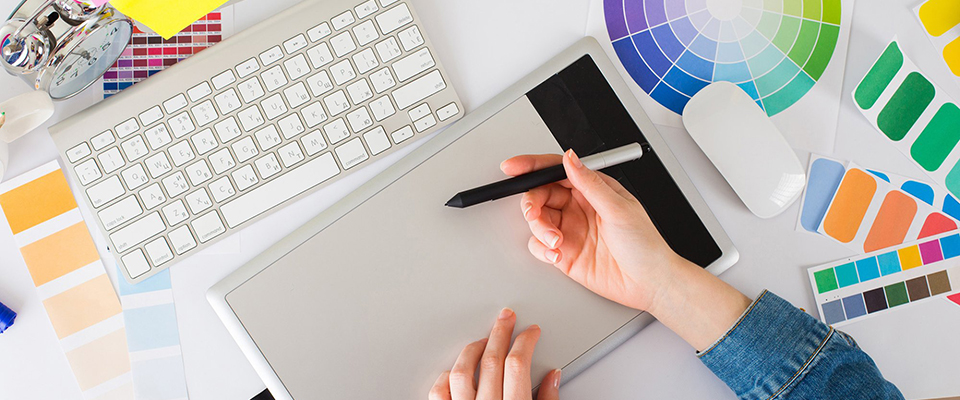
Creating a design for portfolio that stands out is all about the right layout and structure. It’s how you arrange your work. A good layout makes your design for portfolio easy to look at and understand. Therefore, let’s dive into some tips to help you find a perfect design for portfolio.
Start with a Strong Introduction
Your portfolio should start with a bang. A strong introduction sets the tone. It’s like a welcome mat. Share some details about who you are and the work you do. Also, keep it short and sweet. This hooks people in.
Organize Your Work Clearly
How you organize your work is key. It should be easy to follow. Think categories or themes. This helps viewers understand your range and skills. For instance, if you’re a graphic designer, you might have sections like logos, posters, and web design.
Keep It Consistent
Consistency is important. Your portfolio should have a uniform look and feel. In other words, this means using similar styles and colors across pages. It creates a cohesive experience. A tool like Canva Pro in the Philippines can help, especially if you’re managing this as a side hustle in the Philippines.
Make Navigation Simple
People should be able to find what they’re looking for easily. Simple navigation is crucial. Use clear labels for sections. Also, consider a menu or tabs. A smoother navigation enhances the overall user experience.
Focus on Your Best Work
Quality over quantity. That’s the rule. Choose your best pieces. They should showcase your skills and range. Don’t overwhelm viewers with too much work. A few strong pieces are better than many average ones.
Use High-Quality Images
Your work should look its best. So, use high-quality images. They should be clear and well-lit. Remember, this is your chance to shine. Also, blurry or low-quality images won’t do your work justice.
Add Descriptions and Stories
Every item in your portfolio should narrate a tale. Therefore, add short descriptions. Explain the project and your role. This adds depth to your work. It also helps viewers understand the context.
Keep It Updated
An updated portfolio shows you’re active and evolving. Add new work regularly. Remove older or less relevant pieces. So, this keeps your portfolio fresh and relevant.
Consider SEO
If your portfolio is online, SEO matters. This helps people find your work. That is to say, a WordPress developer or an SEO specialist in the Philippines can help make your portfolio more visible.
Responsive Design
Your portfolio should look good on any device. For example, this means phones, tablets, and computers. Responsive design is key. It ensures everyone can view your work, no matter the device.
End with a Call to Action
Finish with a call to action. Invite viewers to contact you or see more work. This encourages engagement. Also, it’s a way to connect with potential clients or employers.
To sum up, a design for portfolio is a journey. That is to say, it’s about showcasing your work in the best light. Remember these tips. Keep it simple, consistent, and focused on your best work. Use clear navigation and high-quality images. And always keep your audience in mind. With these guidelines, you’ll create a portfolio that’s both impressive and effective.
Visual Elements in Design for Portfolio
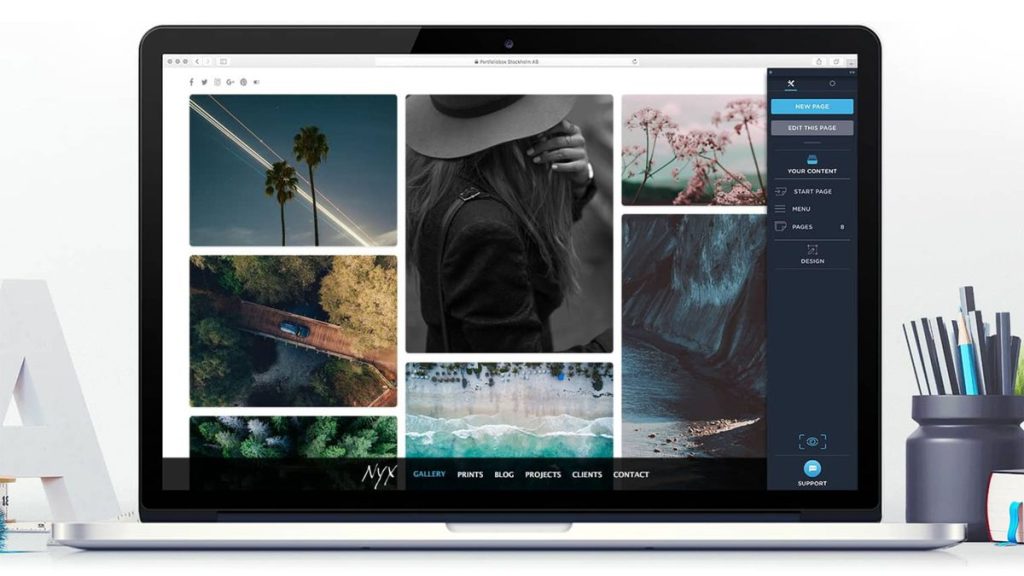
When it comes to design for portfolio, visual elements are crucial. They’re what catch the eye first. So, let’s explore how to use these elements to make your portfolio stand out.
Choosing the Right Colors
Colors can set the mood. They can make your portfolio feel a certain way. Therefore, pick colors that match your style. Bright colors can be fun and energetic. Also, soft colors can be calm and professional. The key is consistency. Stick to a color scheme. This makes your portfolio look unified.
Typography Matters
The type of font you use is important. It should be easy to read. Avoid fancy fonts that are hard to understand. The font should match your work’s style. For example, a modern font for a tech portfolio. Consistency is important here too. So, use the same one or two fonts throughout.
Use of Images and Graphics
Images and graphics are powerful. They show your work in action. Therefore, make sure they’re high quality. They should be clear and crisp. This helps your work look its best. Keep in mind, an image can convey a myriad of meanings.
White Space is Your Friend
Don’t be afraid of white space. It’s the empty space around your work. It helps things stand out. Also, it makes your portfolio look clean and organized. Utilizing white space can be an influential element in design.
Balance and Harmony
Your portfolio should feel balanced. So, this means not too crowded or too empty. Harmony is when everything works together. The colors, fonts, and images should all match. This creates a pleasing look.
Consistency Across the Board
Everything in your portfolio should match. For instance, this includes your business cards, resume, and social media. They should all have the same look and feel. This helps create a strong brand.
Personal Touch
Add a personal touch to your portfolio. This could be a logo or a signature style. It’s something that says, “This is me.” It helps people remember you.
Accessibility and Readability
Make sure everyone can enjoy your portfolio. So, this means good contrast between text and background. It also means not using colors that are hard for colorblind people to see.
Keep it Updated
Trends change. Keep your portfolio up to date with the latest styles. Also, this shows that you’re current and in the know.
Visual elements are key in design for portfolio. They can make or break how your work is seen. Remember to use colors, fonts, and images wisely. Keep things balanced and harmonious. Add your personal touch. And always think about your viewer. With these tips, your portfolio will not only look great but also tell your story in the best way.
Incorporating Testimonials and Feedback in Design for Portfolio
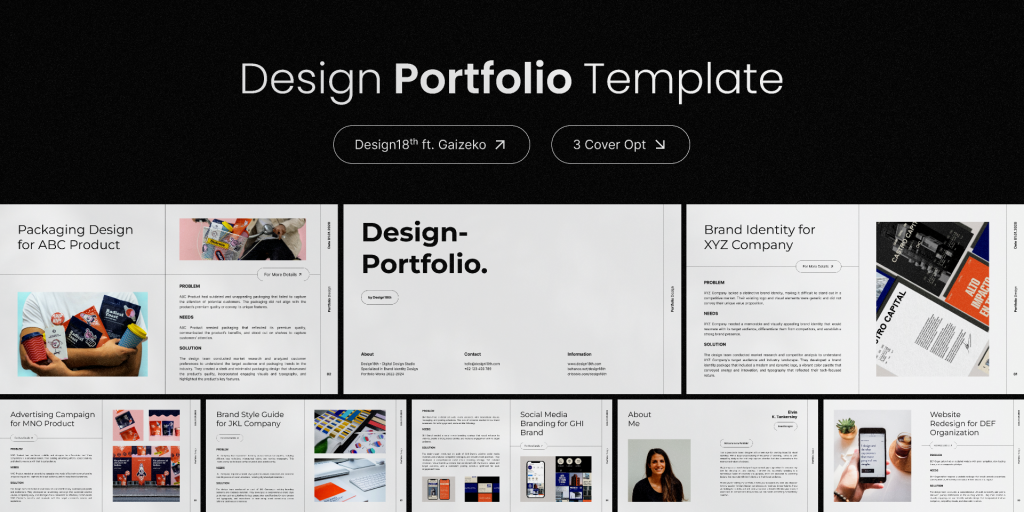
Adding testimonials and feedback to your portfolio can be a game-changer. It’s one thing to show your work. It’s another to show what others think about it. So, let’s look at how to include testimonials and feedback effectively.
Why Testimonials Matter
Testimonials are like personal recommendations. They show that others value your work. This builds trust. When potential clients or employers see good feedback, they’re more likely to trust you too. Therefore, it’s proof that you’re good at what you do.
Choosing the Right Testimonials
Not all testimonials are equal. So, choose ones that speak to your skills and professionalism. Look for feedback that’s specific. General comments like “Great job!” are nice. But comments that detail what you did well are better.
How to Ask for Testimonials
Don’t be shy about asking for testimonials. So, reach out to past clients or colleagues. Also, explain that you’re updating your portfolio. Most people are happy to help. Just make sure to ask politely and thank them for their time.
Presenting Testimonials Effectively
How you present testimonials is important. They should be easy to read. Use short quotes. Highlight the most important parts. Also, you can include a photo of the person, if they’re okay with it. This adds a personal touch.
Including Case Studies
Case studies are like in-depth testimonials. That is to say, they tell the story of a project from start to finish. This can be very impressive. It shows your process and how you solve problems. Include a few case studies if you can.
Balancing Testimonials with Your Work
Testimonials are great. But they shouldn’t overshadow your work. So, balance is key. Also, include enough to add value. However, ensure the primary emphasis remains on your work.
Getting Feedback from Peers
Sometimes, peer feedback can be helpful. Therefore, other creatives can offer a different perspective. They might notice things that clients don’t. This can be valuable.
Updating Testimonials Regularly
Just like your work, keep your testimonials up to date. So, add new ones as you get them. Also, remove older ones that aren’t as relevant. This keeps your portfolio fresh and current.
Making It Easy to Leave Feedback
If you have an online portfolio, make it easy for people to leave feedback. So, include a contact form or email link. Also, this encourages more feedback. And more feedback can mean more testimonials.
Testimonials and feedback can really boost your portfolio. They add credibility. They show that your work is valued. So, use these tips to include them in a way that enhances your portfolio. Remember, your portfolio is a reflection of you. Strengthen it to the fullest extent possible.
Conclusion
In conclusion, a standout design for portfolio is key to showcasing your skills. Remember, it’s all about clear presentation and letting your work shine. So, from choosing the right platform to adding testimonials, every step is important. Keep it simple, focus on quality, and always be true to your style. Now, you’re ready to create a portfolio that not only looks great but also tells your unique story. So, go ahead, put these tips into action. Design a portfolio that you’re proud of and that will surely impress.






